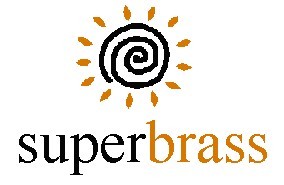The iconic double-headed eagle is one of the most recognizable symbols in Freemasonry, adorning Masonic regalia, documents, and lodge decor. But what exactly does this distinctive two-headed bird represent to Freemasons?
The double-headed eagle has a long and storied history that sheds light on its significance as a Masonic emblem.
If you’re short on time, here’s a quick answer: The double-headed eagle symbolizes the higher wisdom and compassion that comes through initiation into Freemasonry. It is meant to inspire Freemasons to contemplate both the temporal and spiritual worlds.
In this in-depth guide, we’ll explore the origins and evolution of the double-headed eagle, its use throughout history, and its symbolic meaning when used in the Masonic context.
Origins And Historical Use Of The Double-Headed Eagle
The double-headed eagle is a symbol that has held significant meaning throughout history, particularly within the context of Freemasonry. Its origins can be traced back to ancient Hittite iconography, where it was depicted as a symbol of power and authority.
The Hittites, an ancient civilization that existed in the Bronze Age, believed that the double-headed eagle represented the union of heaven and earth.
Ancient Origins In Hittite Iconography
The use of the double-headed eagle as a symbol of power can be seen in various artifacts from Hittite civilization. These artifacts, which date back thousands of years, depict the eagle with its wings outstretched and two heads facing opposite directions.
This symbol was believed to represent the duality of the heavens and the earth, and the power that comes from the union of these two realms.
Adoption In Byzantium And Medieval Heraldry
The symbol of the double-headed eagle was later adopted by the Byzantine Empire, where it became a prominent emblem of imperial power. The Byzantine rulers saw themselves as the successors of the Roman Empire and used the eagle as a symbol of their authority.
This symbol continued to be used in the heraldry of various noble families during the medieval period, further solidifying its association with power and prestige.
Use By The Holy Roman Empire And Eastern Europe
The double-headed eagle was also embraced by the Holy Roman Empire, which saw itself as the spiritual and political successor to the Roman Empire. The eagle symbolized the dual nature of the empire, with one head representing the secular power and the other representing the spiritual authority of the emperor.
This symbol was also adopted by various Eastern European countries, such as Russia and Serbia, as a symbol of their imperial aspirations.
The Double Eagle In Freemasonry
In Freemasonry, the double-headed eagle is often seen as a symbol of balance and harmony. It represents the duality of human nature and the need to find a balance between our spiritual and earthly selves.
The eagle’s two heads also symbolize the dualistic nature of Freemasonry itself, which seeks to reconcile various philosophical and religious traditions.
It’s worth noting that while the double-headed eagle has been associated with Freemasonry, its meaning and interpretation may vary among different Masonic lodges and jurisdictions. Therefore, it is important to consider the specific context and symbolism within each individual Masonic organization.
For more information about the double-headed eagle and its significance in Freemasonry, you can visit the website of the United Grand Lodge of England, which provides valuable insights into the symbolism and rituals of Freemasonry.
Esoteric Symbolism And Meaning In Freemasonry
Freemasonry is an ancient and secretive society that has long fascinated individuals with its rituals, symbols, and teachings. One of the most intriguing symbols in Freemasonry is the double-headed eagle.
This symbol holds deep esoteric meaning within the organization, representing various concepts and ideas.
Duality And Wisdom
The double-headed eagle in Freemasonry is often associated with the concept of duality and wisdom. The two heads facing in opposite directions symbolize the balance between opposing forces, such as light and dark, yin and yang, or good and evil.
This symbolizes the Mason’s pursuit of knowledge and the understanding that true wisdom comes from embracing both sides of any given situation.
Freemasonry teaches its members to seek knowledge from different perspectives and to strive for a deeper understanding of the world around them. The double-headed eagle serves as a reminder of the importance of embracing duality in the quest for wisdom.
Initiation And Enlightenment
Another interpretation of the double-headed eagle in Freemasonry is its association with initiation and enlightenment. The two heads facing in different directions can be seen as representing the initiate’s journey from darkness to light, from ignorance to knowledge.
As Freemasons progress through the various degrees and initiations, they undergo a transformative experience that leads to personal growth and enlightenment. The double-headed eagle symbolizes this journey, reminding Masons of the importance of seeking enlightenment and constantly striving for self-improvement.
Temporality And Spirituality
The double-headed eagle in Freemasonry also represents the connection between temporality and spirituality. The two heads can be seen as representing the earthly realm and the spiritual realm, with the body of the eagle acting as a bridge between the two.
Freemasonry encourages its members to find a balance between their material and spiritual pursuits. The double-headed eagle serves as a reminder to Masons to lead a balanced life, nurturing both their worldly responsibilities and their spiritual well-being.
Balance, Harmony, And Discernment
Lastly, the double-headed eagle symbolizes the importance of balance, harmony, and discernment. The two heads facing in opposite directions represent the need for Masons to seek harmony in their thoughts, actions, and relationships.
Freemasonry teaches its members to exercise discernment in their decision-making, to carefully weigh different perspectives and make informed choices. The double-headed eagle serves as a constant reminder of the importance of seeking balance, harmony, and discernment in all aspects of life.
The Double-Headed Eagle Across Masonic Bodies And Rites
The double-headed eagle is a symbol that holds great significance within Freemasonry. It is often used to represent the connection between different Masonic bodies and rites. Let’s explore how this symbol is utilized in various Masonic organizations:
York Rite Bodies
In the York Rite, the double-headed eagle is seen as a symbol of sovereignty and power. It is often associated with the Knights Templar, one of the orders within the York Rite. The double-headed eagle can be found on the regalia and banners of this order, representing their commitment to upholding the principles of chivalry and protecting the craft.
Scottish Rite Bodies
Within the Scottish Rite, the double-headed eagle takes on a different meaning. It is often associated with the 32nd degree, which is one of the highest degrees within the Scottish Rite system. The double-headed eagle represents the dual nature of humanity, with one head looking towards the heavens and the other towards the earth.
It symbolizes the pursuit of knowledge and the balance between spiritual and earthly matters.
Shriners
The double-headed eagle is also prominently featured in the Shriners organization. Shriners are known for their philanthropic work, particularly in providing medical care to children in need. The double-headed eagle represents the duality of their mission – to have fun and enjoy fellowship while also giving back to the community.
It serves as a reminder of the balance between joy and service.
Grand Lodges And Appendant Bodies
Grand Lodges and other appendant bodies within Freemasonry may also incorporate the double-headed eagle into their symbolism. Its meaning may vary depending on the specific organization, but it often represents unity and cooperation among Masonic bodies.
The double-headed eagle serves as a reminder that despite the differences in rituals and practices, all Masonic bodies are connected by a shared commitment to brotherhood and the pursuit of moral and intellectual growth.
For more information on Freemasonry and its symbolism, you can visit https://www.freemasonry.bcy.ca/ which provides an in-depth exploration of the subject.
Use In Masonic Regalia And Decor
The double-headed eagle is a symbol that holds great significance in Freemasonry. It is often seen in various forms of Masonic regalia and decor, adding to the rich symbolism and tradition of the fraternity.
Jewels And Medals
One of the most common uses of the double-headed eagle in Freemasonry is in the design of jewels and medals. These intricate pieces of regalia often feature the double-headed eagle prominently, representing the duality and balance of the fraternity’s teachings.
The eagle’s two heads facing opposite directions symbolize the pursuit of knowledge and wisdom in all aspects of life.
These jewels and medals are often awarded to Freemasons who have excelled in their dedication to the principles and values of the fraternity. They serve as a reminder of the individual’s commitment to personal growth and the collective goals of the Masonic community.
Sashes And Aprons
In Masonic ceremonies and rituals, sashes and aprons play a significant role. These garments are adorned with various symbols, including the double-headed eagle. The placement of the double-headed eagle on these regalia items signifies the wearer’s status and achievements within the Masonic order.
Wearing a sash or apron with the double-headed eagle design is a visual representation of the Mason’s commitment to the pursuit of knowledge, personal development, and the betterment of society. It serves as a reminder of the values upheld by Freemasonry and the responsibility each member has to uphold those values in their daily lives.
Banners And Standards
Banners and standards are often used in Masonic processions and ceremonies. These flags carry symbolic meanings, and the double-headed eagle is frequently featured on them. The presence of the double-headed eagle on Masonic banners represents the unity and strength of the fraternity.
As Freemasons march with these banners, they demonstrate their dedication to the principles of brotherhood, truth, and enlightenment. The double-headed eagle serves as a reminder of the higher ideals that the fraternity strives to achieve and the collective effort required to attain them.
Lodge Furnishings And Architecture
Freemasonry places great importance on the design and aesthetics of lodge furnishings and architecture. The double-headed eagle can often be found incorporated into the design of Masonic buildings, furniture, and other decorative elements.
These symbols serve to create a sense of unity and identity within the Masonic lodge. They also serve as a visual representation of the values and principles that Freemasonry upholds. The double-headed eagle, with its majestic presence, adds to the overall ambiance and symbolism of the Masonic lodge.
Controversies And Misconceptions
When it comes to the double-headed eagle symbol in Freemasonry, there are several controversies and misconceptions that have arisen over the years. Let’s take a closer look at some of these misunderstandings.
Confusion With Reichsadler Of Nazi Germany
One of the most common misconceptions is the confusion between the double-headed eagle used in Freemasonry and the Reichsadler of Nazi Germany. While both symbols feature a double-headed eagle, they have very different meanings.
The double-headed eagle in Freemasonry represents the duality of the human being, reflecting both the spiritual and earthly nature. On the other hand, the Reichsadler was a symbol used by the Nazi regime and has no connection to Freemasonry whatsoever.
It is important to distinguish between these two symbols to avoid any misinterpretation.
Misattribution To Illuminati
Another controversy surrounding the double-headed eagle in Freemasonry is its misattribution to the Illuminati. The Illuminati, a secret society founded in the 18th century, is often associated with conspiracy theories and hidden agendas.
However, there is no direct connection between the Illuminati and Freemasonry. The double-headed eagle is not an official symbol of the Illuminati, and any claims suggesting otherwise are unfounded. It is crucial to separate fact from fiction when discussing the origins and meanings of symbols within different organizations.
Prohibition In Co-Masonry
One lesser-known controversy related to the double-headed eagle is its prohibition in Co-Masonry. Co-Masonry is a branch of Freemasonry that allows both men and women to become members. Some Co-Masonic organizations have chosen to exclude the use of the double-headed eagle symbol due to its association with male-dominated traditional Freemasonry.
This decision has sparked debates within the Co-Masonic community, with some arguing for the inclusion of the symbol to maintain a connection to the broader Masonic tradition, while others advocate for the development of new, more inclusive symbols.
Similar Symbolic Birds In Myth And Legend
Garuda And Gandaberunda
One of the most prominent mythological birds is the Garuda, a legendary creature from Hindu and Buddhist mythology. Garuda is depicted as a powerful bird-like creature with the body of a man and the wings, beak, and talons of an eagle.
It is considered a symbol of divine power, strength, and protection. In Hindu mythology, Garuda is the mount of Lord Vishnu, the preserver of the universe.
Another similar bird in Indian mythology is the Gandaberunda, which is a double-headed mythological creature that resembles an eagle. It is a symbol of power and strength and is associated with Lord Vishnu and the Hoysala dynasty in South India.
The Gandaberunda is often depicted with two heads facing opposite directions, representing the duality of life and the ability to see both the past and the future.
Double-Headed Phoenix
The phoenix is a mythical bird that is often associated with rebirth and immortality. In some cultures, the phoenix is depicted with two heads, symbolizing the dual nature of life and death. The double-headed phoenix is often seen as a powerful and mystical creature that has the ability to rise from the ashes and start anew.
It represents the cyclical nature of life and the constant process of transformation and renewal.
Janus-Faced Birds
In Roman mythology, Janus is the god of beginnings, transitions, and time. He is often depicted with two faces, one looking forward and the other looking backward. This duality represents his ability to see both the past and the future.
Janus is sometimes associated with birds, particularly those with two heads or faces. These birds symbolize the concept of duality and the ability to simultaneously look back at the past and forward to the future.
Conclusion
While the double-headed eagle originated as a secular emblem of power and empire, Masons imbued it with introspective meaning related to initiation, contemplation and harmonious living. For Freemasons, the two eagle heads represent the reconciliation of opposites and the philosophy of living with virtue, wisdom and moderation.
By contemplating the symbolism of the double-headed eagle, Masons are inspired to lead lives of thoughtful morality, compassion and righteous conduct – striving to contribute to the greater good of humanity.










